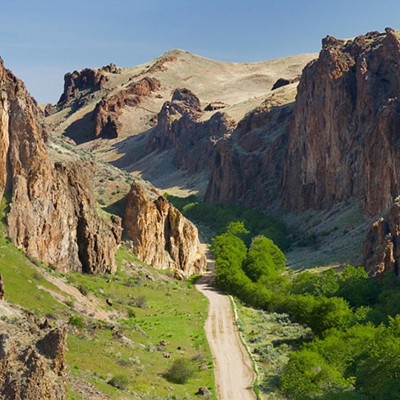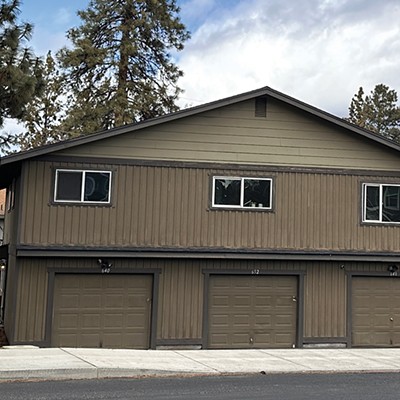Mirror Pond is a vanishing mirage. The body of water adored as an icon of Bend—its crystalline surface reflecting pine trees and snow-capped mountains—exists only on the city's stylized logo.
The logo romanticizes a shallow, man-made puddle off Drake Park, a deepening heap of mud over which a clogged crook of the Deschutes River spreads out and collects dust as it drifts toward a 1910 hydroelectric dam.
Far from representing a community that lives in harmony with wilderness, Mirror Pond is a badly plumbed backyard water feature, a putrefying monument to the false dichotomy of humanity and nature. That water wants to flow.
Mirror Pond's beauty was always superficial, the product of engineering aimed at subduing the savage river for civilized company. After decades of thickening with sediment running into the constricted river from a vast watershed and reservoir, the pond was dredged in 1984 at a cost of $312,000.
Today such an operation would cost $2 million to $5 million, members of the Mirror Pond Steering Committee estimate. If nothing is done, the rising silt will create acres of fetid mud flats. But if the community merely carves another pond basin, ongoing sedimentation will eventually require more rounds of exorbitantly costly dredging.
The steering committee, operating with $200,000 from the city and the Bend Park & Recreation District, is charged with choosing a solution and a way to pay for it. Options include dredging, upgrading the dam with a fish passage, removing the dam, and speeding up the river by narrowing its channel.
The committee plans to hire a consultant to produce renderings of the area under various scenarios. After asking the public which option it prefers, it would spend the bulk of its resources devising a plan to implement it.
That superficial approach assumes the community's dominant value is maximum prettification and betrays the committee's reluctance to confront an unhealthy attachment to this unnatural pond.
Since the committee must posit some working assumption to guide its initial expenditures, it should recognize that no one moves to Bend to settle into an Adirondack chair and admire a postcard image. People move here to live active lives amid natural beauty. Bend's allure is precisely that it's not removed from nature.
Bendites value wildness enough to conserve it. They get behind the movement to revive riparian ecosystems by removing dams and restoring natural channels. For the sake of coming generations, they want to know how stakeholders might work with water, soil and organisms to create an ecosystem that includes but does not submit to people.
The park district's project manager, Jim Figurski, should get that. He prides himself on sustainable, environmentally responsible approaches to urban planning.
So should committee members Matt Shinderman, who teaches ecology and environmental policy at OSU-Cascades, and Bill Smith, whose company gave the stretch of the Deschutes running through the Old Mill District back to the people of the city as well as the wildlife that had been run off by yesterday's lumber mills.
The committee must act from a courageous commitment to conservation. Instead of rubbing rouge on an outmoded icon, it should seek sound scientific guidance on restoring the ecological health from which genuine beauty emanates. Here's a boot to get it moving in the right direction.




















